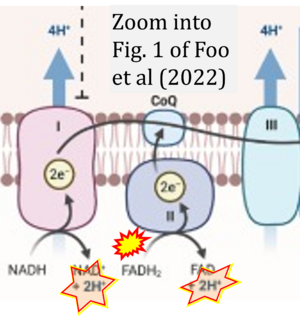Foo 2022 Trends Microbiol
| Foo J, Bellot G, Pervaiz S, Alonso S (2022) Mitochondria-mediated oxidative stress during viral infection. Trends Microbiol 30:679-92. https://doi.org/10.1016/j.tim.2021.12.011 |
Foo J, Bellot G, Pervaiz S, Alonso S (2022) Trends Microbiol
Abstract: Through oxidative phosphorylation, mitochondria play a central role in energy production and are an important production source of reactive oxygen species (ROS). Not surprisingly, viruses have evolved to exploit this organelle in order to support their infection cycle. Beyond its role in the cellular antiviral response, induction of oxidative stress has emerged as a common strategy employed by many viruses to promote their replication. Here, we review the key molecular mechanisms employed by viruses to interact with mitochondria and induce oxidative stress. Furthermore, we discuss how viruses benefit from increased ROS levels, how they control ROS production to maintain a favorable redox environment, and how they cope with ROS-mediated cell death.
• Bioblast editor: Gnaiger E
Correction: FADH2 and Complex II
- FADH2 is shown as the substrate feeding electrons into Complex II (CII). This is wrong and requires correction - for details see Gnaiger (2024).
- Gnaiger E (2024) Complex II ambiguities ― FADH2 in the electron transfer system. J Biol Chem 300:105470. https://doi.org/10.1016/j.jbc.2023.105470 - »Bioblast link«
Hydrogen ion ambiguities in the electron transfer system
Communicated by Gnaiger E (2023-10-08) last update 2023-11-10
- Electron (e-) transfer linked to hydrogen ion (hydron; H+) transfer is a fundamental concept in the field of bioenergetics, critical for understanding redox-coupled energy transformations.
- However, the current literature contains inconsistencies regarding H+ formation on the negative side of bioenergetic membranes, such as the matrix side of the mitochondrial inner membrane, when NADH is oxidized during oxidative phosphorylation (OXPHOS). Ambiguities arise when examining the oxidation of NADH by respiratory Complex I or succinate by Complex II.
- Oxidation of NADH or succinate involves a two-electron transfer of 2{H++e-} to FMN or FAD, respectively. Figures indicating a single electron e- transferred from NADH or succinate lack accuracy.
- The oxidized NAD+ is distinguished from NAD indicating nicotinamide adenine dinucleotide independent of oxidation state.
- NADH + H+ → NAD+ +2{H++e-} is the oxidation half-reaction in this H+-linked electron transfer represented as 2{H++e-} (Gnaiger 2023). Putative H+ formation shown as NADH → NAD+ + H+ conflicts with chemiosmotic coupling stoichiometries between H+ translocation across the coupling membrane and electron transfer to oxygen. Ensuring clarity in this complex field is imperative to tackle the apparent ambiguity crisis and prevent confusion, particularly in light of the increasing number of interdisciplinary publications on bioenergetics concerning diagnostic and clinical applications of OXPHOS analysis.




